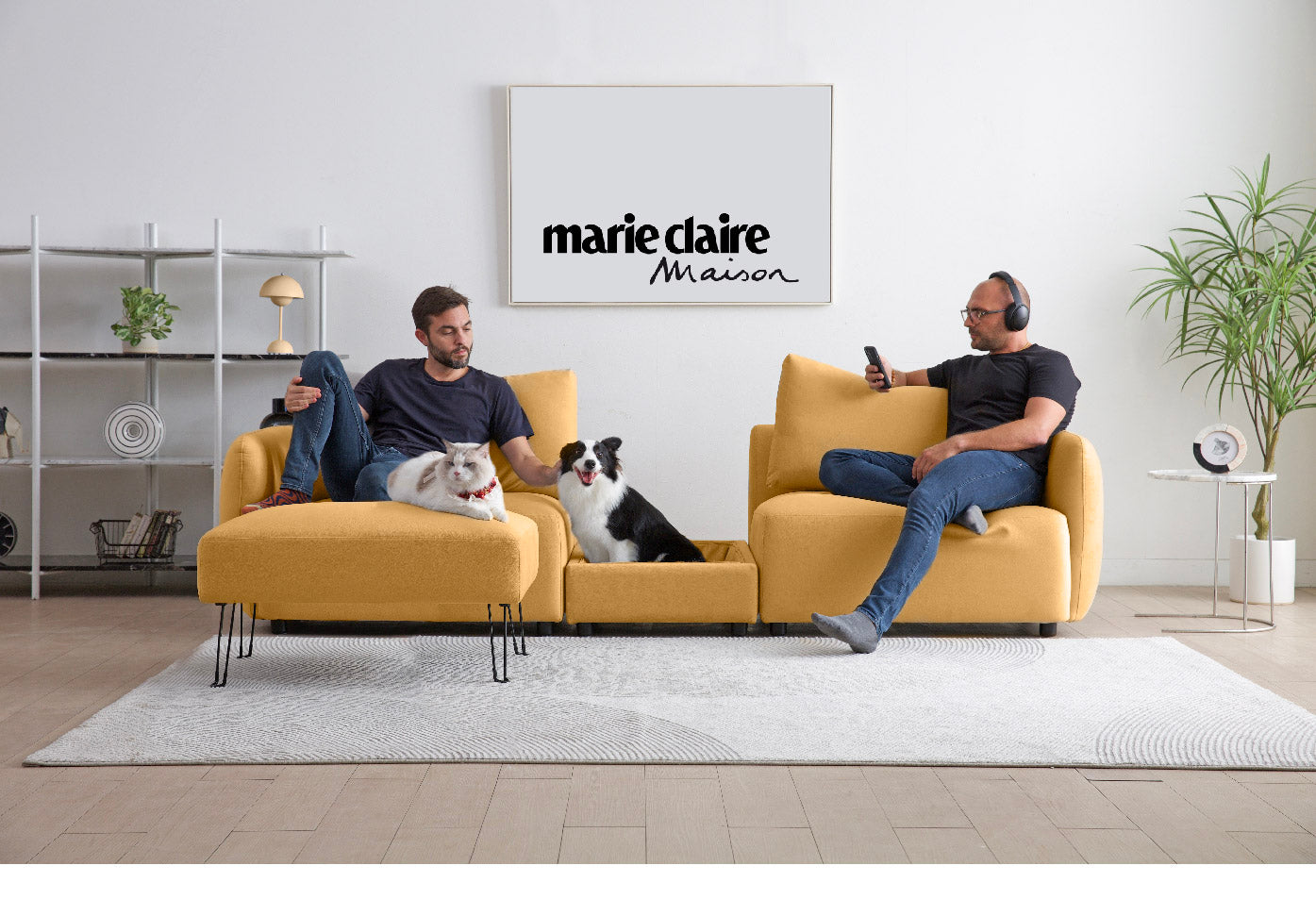Remote work has become a norm for many, offering flexibility and more time at home with your four-legged companions. However, balancing professional responsibilities while ensuring your pet’s well-being requires thoughtful planning. Pets thrive on routine, attention, and stimulation—factors that can be disrupted by a busy work schedule. At OKINO, we’re here to help you create a harmonious home environment that supports both your productivity and your pet’s happiness. Here’s how.
1. Establish a Consistent Routine
Pets, like humans, feel more secure with a predictable daily routine. Balancing work and pet care becomes easier when you plan your day with them in mind.
• Set mealtimes: Feed your pets at the same time every day to help them feel secure. Use automatic feeders if meetings or calls make timely feeding difficult.
• Incorporate playtime: Dedicate specific times of the day for play and exercise. Morning walks or play sessions before work can help burn off energy and encourage calmness while you work.
• Bathroom breaks: For dogs, schedule regular potty breaks, especially during long work sessions. For indoor pets like cats, make sure litter boxes are clean and accessible.
2. Create a Pet-Friendly Workspace
Your home office should allow you to focus while keeping your pet comfortable and entertained.
• Designate a cozy spot: Place a bed, cushion, or blanket for your pet near your desk so they can relax close to you.
• Provide distractions: Keep toys, chew treats, or puzzle feeders nearby to keep your pet engaged when you’re busy.
• Limit interruptions: If your pet seeks attention during meetings, try using baby gates to create boundaries or give them a long-lasting treat to stay occupied.
3. Balance Attention and Independence
While it’s tempting to give your pet constant attention, teaching them independence is equally important for their well-being.
• Encourage solo play: Use toys that promote independent play, such as treat-dispensing balls, scratching posts, or cat tunnels.
• Avoid over-dependence: Gradually train your pet to spend short periods alone in another room. This helps prevent separation anxiety when you need to leave home.
• Reward calm behavior: Reinforce positive behavior by rewarding your pet when they quietly relax while you work.
4. Schedule Exercise and Mental Stimulation
A tired pet is a happy pet! Regular physical and mental activity keeps them healthy and prevents boredom-related misbehavior.
• Daily walks or playtime: Dogs need daily walks or outdoor play to expend energy and stimulate their senses. Cats enjoy interactive toys like feather wands or laser pointers.
• Mental enrichment: Rotate toys to keep things interesting and introduce puzzle feeders or training sessions to engage your pet’s brain.
• Interactive play: Use your breaks to play a quick game of fetch or hide-and-seek—it makes a big difference.
5. Minimize Distractions During Meetings
Pets love to crash virtual meetings, but a few tricks can help minimize disruptions.
• Provide entertainment: Before a meeting, give your pet a toy or chew treat to keep them occupied.
• Use white noise or calming music: Soothing background sounds can calm your pet and mask triggering noises.
• Close doors: If your pet interrupts often, consider setting up your workspace in a quiet, pet-free room for important calls.
6. Address Behavioral Challenges
Working from home can sometimes amplify unwanted pet behaviors like barking, scratching, or constant attention-seeking.
• Understand the cause: Boredom, anxiety, or lack of exercise are common triggers. Identifying the root helps address it effectively.
• Positive reinforcement: Reward good behavior with treats or praise, and redirect negative actions toward acceptable alternatives (e.g., scratching post).
• Training sessions: Use lunch breaks to reinforce commands or teach tricks. Training builds bonds and stimulates your pet’s mind.
7. Consider Your Pet’s Emotional Needs
Pets are social creatures, and their emotional connection with you greatly impacts their happiness.
• Quality over quantity: Even if you’re busy, give your pet focused attention during breaks or after work. A few meaningful minutes go a long way.
• Recognize stress signals: Look out for signs like excessive barking, licking, or hiding. Create a calm environment and offer reassurance as needed.
8. Ensure a Quiet Retreat for Your Pet
Just as you need a quiet space to work, pets benefit from a peaceful area to retreat to when things get too noisy.
• Create a safe zone: Set up a corner with their bed, toys, and maybe a calming diffuser—perfect for when they need a break.
• Noise reduction: Use white noise machines or close doors during loud activities or meetings to minimize stress.
9. Make Time for Outdoor Adventures
If your schedule allows, build outdoor time into your weekly routine. Fresh air and new surroundings benefit your pet’s physical and mental well-being.
• Explore new paths: Dogs love variety—try different walking routes or visit local parks.
• Leash training for cats: With proper training, some cats enjoy leashed outdoor exploration. Start slowly and let them go at their own pace.
10. Prioritize Your Own Well-Being
A happy pet starts with a happy owner. Managing your stress and maintaining a balanced routine helps you give your best to both your pet and your job.
• Set boundaries: Define clear work hours and communicate them to housemates to reduce disruptions.
• Take breaks together: Recharge with your pet—cuddle, walk, or simply relax to boost your mood and productivity.
Final Thoughts
Working from home offers a unique chance to deepen your bond with your pet, but it takes thoughtful effort to meet their needs. By setting routines, creating pet-friendly spaces, and prioritizing their physical and emotional well-being, you can build a balanced and fulfilling home life for both of you.
At OKINO, we understand the challenges of remote work with pets. That’s why our furniture is designed to enhance comfort and functionality while keeping your pet in mind. Explore our collection for smart solutions that seamlessly fit your lifestyle.









